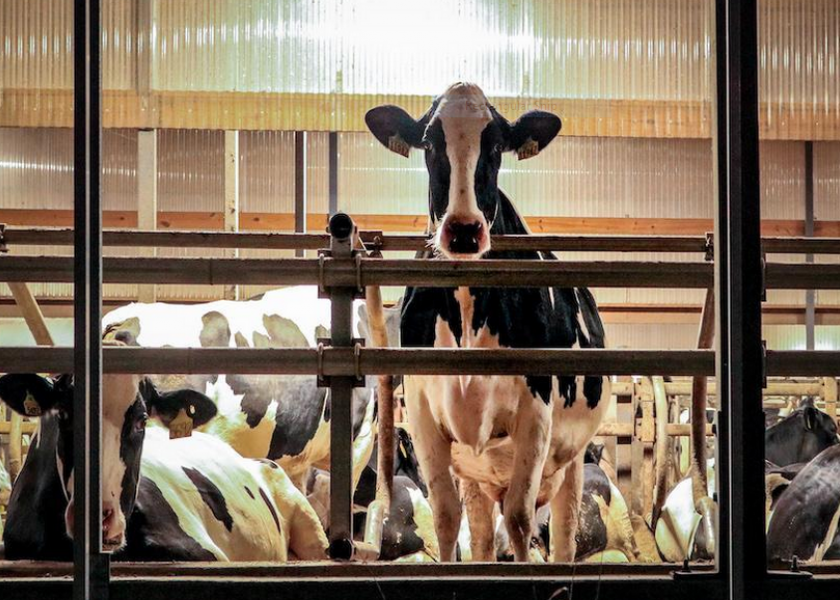Transition Cows: It’s Tough Being the New Kid

The transition period, 3 weeks before and after calving, is challenging for all cows. But for first-calf heifers, it’s likely the scariest and most stressful time in their young lives.
Dairy researcher Kathryn Proudfoot has dedicated most of her research career to understanding and supporting primiparous cows. Along with co-author Juliana Huzzey, her insights were published in a recent collection in the Journal of Dairy Science as part of an Animal Behavior and Well-Being Symposium.
Proudfoot shared that, compared their experienced sisters who are milking-string veterans, first-calf heifers have different social, feeding, and lying behaviors. In addition to the stress they experience delivering their first calf and starting lactation, they are faced with cow-calf separation, novel environments like the milking parlor, pen changes, and shifting social hierarchies.
A survey of Minnesota dairy producers revealed that milking first-calf heifer for the first time was noted as the most challenging factor influencing optimal cattle flow on the farm. Likewise, a New Zealand study showed that milking first-calf heifers was the main source of injury for parlor workers.
Compared to multiparous cows, primiparous animals are more restless in the weeks leading up to calving. Researchers have found that they lie down and get up more frequently, have more postural changes, and take more steps. They also actively seek a separated area when it is time to give birth.
Not surprisingly, they also feel stress when they are commingled with older cows after calving, as they will likely be on the lower end of the social strata. Fecal cortisol metabolite levels – a proxy for stress – have been found to be significantly higher in primiparous cows 4 days after regrouping compared to older cows. Proudfoot noted that, depending on the dairy’s system for calving and fresh-cow monitoring, cows may experience up to 5 pen moves in the 6-week transition period.
Milking also takes a toll, as young cows learn to navigate an unfamiliar environment and may be greeted by frustrated handlers.
Based on their own research findings and a review of other studies evaluating primiparous cows, Proudfoot and Huzzey offered the following recommendations to support primiparous cows as they embark on their lactation careers:
- Provide all cows – and especially first-calf heifers – with an option for a secluded area to give birth.
- Do not overstock pens during the transition period, and provide plenty of comfortable resting space.
- Keep primiparous cows exclusively with their fist-calf peers for as long as possible into their first lactations.
- If they must be housed in the same pen as older cows, wait at least a few days after calving, and move them into the new pen with a familiar partner rather than alone.
- Provide parlor or robot training to springers in advance of their initial calving, so the environment is familiar at their first milking.
- Similarly, train close-up heifers to use headlocks with a “carrot-versus-stick” approach, like offering grain as a reward, so later lock-ups for exams, treatments, and breeding are not as stressful.
Proactively easing the stress for primiparous cows and giving them some control over their environment can help support the welfare of those animals, while improving worker routines and animal flow on the dairy at the same time.
For more on animal health, read:
- There’s a New Mastitis-Causing Pathogen in Town: Prototheca Bovis
- Over-the-Counter Antibiotics Are Going Away: 5 Tips to Prepare Your Farm
- When Stray Voltage Strikes







